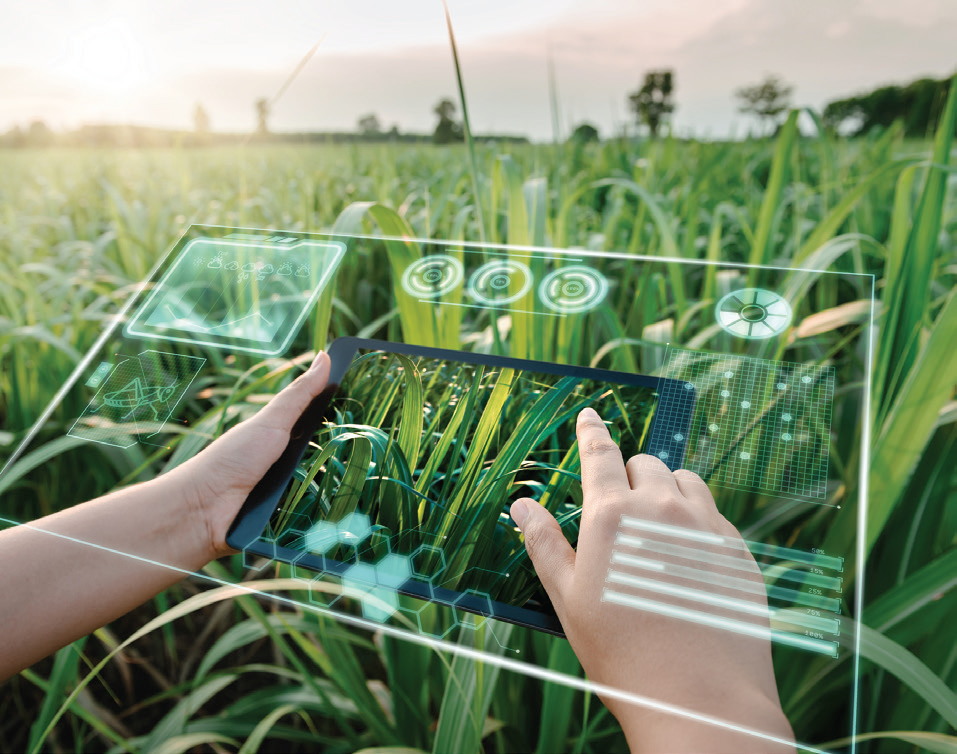
Personal Information:
Elahe Karimi
* CEO and Chairman of the Board of Directors of
Koshehai Zarin Hedayat Company
* Senior expert in Agricultural promotion and
education
* Phone number : 021-76236600 – 09126233015
* Email : Ekarimi644@gmail.com
Memberships:
Member of the Engineering Organization of Tehran
Province
Member of the Agricultural Promotion Association
Vital activities performed:
* Consultancy in agriculture and crop production
* Providing phytosanitary services including
investigation and diagnosis of plant pests and
diseases from farms, gardens, greenhouses,
warehouses and silos for export products,
disinfection and control of all harmful factors by
integrated methods.
* Lecturer, consultant and implementation of matters
related to the cultivation of edible mushrooms
* A trusted expert of the Ministry of Agricultural
Jihad for agricultural land expertise
Documents and certifi cates:
* International certifi cate of TOT (Facilitating Training)
from the World Food Organization
* Training certifi cate for growing edible mushrooms
* Training certifi cate for non-governmental sector
experts (training course on different knowledge
and network methods to take care of agricultural
products)
* Certifi cate of integrated management of pests,
diseases and weeds (IPM) in vegetable, summer and
net crops
* Certifi cate of Entrepreneurship of the Ministry of
Labor
A standard definition of AI would be “the ability of a system or a robot to perform tasks controlled by a computer that humans normally wouldn’t be able to do.” The purpose of Artificial Intelligence is to support and accelerate human decision-making, not to replace it. AI primarily does this with intelligent data discovery, for example, correlations and pattern recognition, visualization such as charts and dashboards, mechanical learning and system coding, and advanced predictive capabilities. Examples of Artificial Intelligence in everyday life include digital personal assistants (such as Siri), online shopping and advertising, cyber security, language translation, and fake news detection. Due to the expansion and rapid growth of industry, mankind has always sought to speed up the work with higher accuracy.
Using Artificial Intelligence methods instead of the manual ones is highly accurate and also increases efficiency. Artificial Intelligence (AI) as one of the advanced technologies, has been able to improve great changes in many industries and fields. Agriculture is also one of the fields that can experience significant improvement with the use of artificial intelligence. The agricultural industry is one of the branches that in this day and age requires strong calculations and automatic operations using artificial intelligence.
AI can be used in different stages of crop cultivation, from planting to harvesting, irrigation, pest and disease management, forecasting weather and climatic conditions, resource efficiency, and marketing; also, in different stages of storage and processing agricultural products, including quality measurement. In addition to these cases, various applications have been found in macro- agricultural decisions, including management of equipment maintenance, precision in agriculture, performance estimation, and quality and stability of land and water. This article examines the uses of Artificial Intelligence in agriculture and then, the advantages and benefits of using Artificial Intelligence in agriculture, and shows how this technology can improve agricultural performance and its production.
Artificial Intelligence technology aims to correct problems in this field and produce specific measures to solve and overcome them. With the use of artificial intelligence, it is possible to diagnose product diseases or pests with 98% accuracy. The use of Artificial Intelligence in the fight against agricultural pests brings many advantages and benefits, which include: 1- High accuracy: Artificial Intelligence can identify pests more accurately and optimally. Using smart algorithms, examples of pests can be recognized and dealt with automatically. 2- Prediction: Artificial Intelligence can predict the conditions for the emergence of pests by analyzing background data such as weather conditions, soil, and other factors, it is possible to more accurately predict the time and place of the appearance of pests and make the necessary plans to combat them. 3- Use of robots: Artificial Intelligence can help with the use of robots in pest control. Robots can automatically detect pests and eliminate them using appropriate methods. 4- Maintaining biological balance: The use of Artificial Intelligence can help reduce the use of chemical pesticides and maintain biological balance. With the help of smart algorithms, chemical pesticides can be used more precisely and optimally.
Also, Artificial Intelligence helps farmers control the harvesting time by adjusting the light to accelerate the production of crops and vegetables. Weather forecasting with the help of data: Artificial Intelligence helps keeping the farmer updated about weather and environmental conditions by using sophisticated methods as well as weather reports. This information helps farmers to be productive and profitable without risking the environment or the health of their crops. Analyzing the generated data helps the farmer to take necessary precautions and make smart and timely decisions by using the ability to understand and learn artificial intelligence.
Monitoring the health of crops and soil: Using Artificial Intelligence is an efficient way to control and monitor the identification of defects and nutrient deficiencies in the soil. With the help of image processing, Artificial Intelligence detects possible defects through the photos captured by the camera and then uses deep learning to analyze plant patterns in agriculture.

Also, agricultural robots with Artificial Intelligence can fi nd more efficient ways to protect crops from weeds. In addition, these robots also help to overcome the labor challenge. Artificial Intelligence robots in the field of agriculture can harvest crops at a higher volume and faster than human workers, and help monitor weeds and spray them with the help of computer vision. Overall, the use of Artificial Intelligence helps farmers to have more efficient ways to protect their crops from weeds. The use of Artificial Intelligence in irrigation methods also includes many advantages and benefits:
Optimizing water consumption: Artificial Intelligence can accurately and optimally determine the amount of water needed by plants. By analyzing background data such as soil type, weather conditions, and water needs of plants, irrigation can be done more precisely and optimally and water consumption can be reduced.
Prediction of water needs: Artifi cial Intelligence can predict the water needs of plants. By using smart algorithms and background data analysis, it is possible to more accurately and optimally predict the time and amount of water needed by plants and make the necessary plans for irrigation. Reducing water waste: Using Artifi cial Intelligence can help reduce wasted water in irrigation practices. By using intelligent systems and automatic control, it is possible to provide water to plants more accurately and optimally. Water resource conservation: Using Artifi cial Intelligence can help in water resource conservation by using smart algorithms and optimizing water consumption, it is possible to use water resources more precisely and optimally, and at the same time guarantee the preservation of water resources. Considering these benefi ts, the use of Artifi cial Intelligence in irrigation practices can bring signifi cant improvement in the performance of farmers and preserve water resources.
Animal husbandry plays a very prominent role in providing food for humans. Using AI’s vision, data mining, robotics, and the Internet; farmers can increase the production capacity and efficiency of their farms. Artificial Intelligence can help farmers in many cases, such as disease diagnosis, farm management, and the production of livestock produce. We’ll discuss some of the most important uses of Artificial Intelligence in animal husbandry.
1. General monitoring systems and detecting suspicious behavior
2. Animal recognition systems
3. Identification, prediction, and prevention of diseases
4. Estimating livestock weight
5. Identifying the optimal time and amount of animal feed purchase
6. Predicting product performance
7. Automatic feeding systems
AI systems need a lot of data for training machines to predict accurately. In the case of a very large area of agricultural land, spatial data can be collected easily, while capturing temporal data is a challenge. Different data for special crops can only be obtained once a year as the crops grow. Since this database takes time to mature, it takes considerable time to build a robust machine-learning model. This is the major reason for using Artificial Intelligence for products such as seeds, fertilizers, and pesticides in this field. As a result, the future of agriculture in the following years is largely dependent on the adaptation of cognitive solutions.
Although extensive research has been done and many applications are available, the agricultural industry is still underserved and many issues are still unknown. Even though using AI decision-making systems and predictive solutions for solving the genuine challenges and demands farmers are faced with is probable; agriculture with the help of Artifi cial Intelligence is only at stage one. To take advantage of the extraordinary scope, programs must be stronger. This facilitates real-time decision-making and consistently uses the appropriate application model to effi ciently collect textual data. Artifi cial Intelligence solutions must become more practical to ensure this technology is available to the agricultural community. If Artifi cial Intelligence cognitive solutions are offered in an open- source platform and the solutions are more affordable, it will ultimately lead to faster adoption and increased insight among farmers.
It is predicted that the world’s population will reach 10 billion by 2050, and due to the increase in population, agricultural lands will turn into houses and roads. Also, the amount of food needed will grow by 50%; meanwhile, about 37.7% of the total land surface is used for the production of crops. In Iran, only about 10% of the land can be cultivated due to water shortage. The only way to deal with this challenge is to use automation and artifi cial intelligence, which can increase effi ciency and production.
Opening Hours:
24/7
Address: Tradex Mena International Consulting Group L.L.C-FZ 6th Floor, Business Center, The Meydan Hotel Grandstand, Meydan Road, Nad Al Sheba, Dubai, United Arab Emirates
+971 50 240 9735
Address: TRADEX INTERNATIONAL CONSULTING DANIŞMANLIK
itH. iHr. ve TiC. LTD. ŞTi.
Tomtom Mah. istiklal Cad. Beyoğlu iş Merkezi No.187 iç Kapr No: 4 Beyoğlu/iSTANBUL Beyoğlu V.D. 8591125255